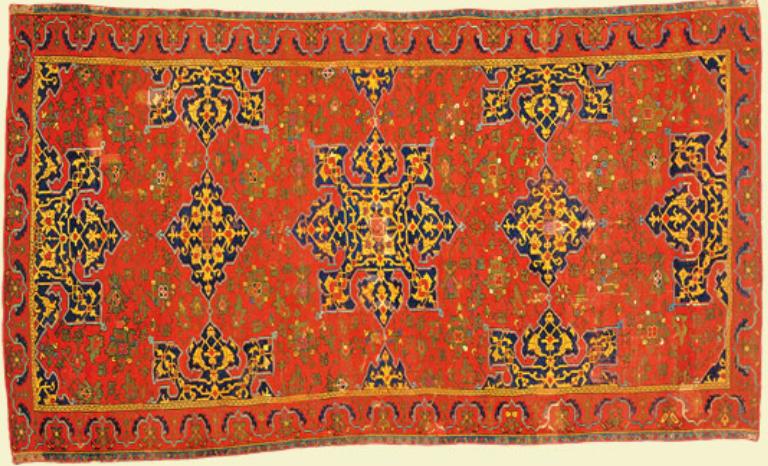Islamic Carpet Weaving Up To 1500 Ce

It is interesting to know that this practice was derived from traditional talims used for making kani shawls when the shawl weavers turned to carpet weaving they continued the practice the finest carpets of kashmir are made of silk warp and pile.
Islamic carpet weaving up to 1500 ce. An oriental rug is a heavy textile made for a wide variety of utilitarian and symbolic purposes and produced in oriental countries for home use local sale and export. Carpet ottoman with cintamani motif c. The ottoman state was founded by turkish tribes in. The simonetti carpet ca.
The introduction of islam allowed the utilitarian practice of carpet weaving to elevate to a fine art form in many areas of the. Rihal is a type of pre islamic carpet that was made in al hirah an ancient city that was the capital of the lakhmids. From cottage industry to fine art. In this period carpets were fabricated in greater quantity than ever before.
Geometric patterns are used in many islamic arts like architecture carpet weaving ceramics woodwork and book covers for the quran. These carpets were not just functional floor coverings they were ornate works of art that indicated the status and wealth of their owners. The art of carpet weaving was particularly important in the ottoman empire. Oriental carpets can be pile woven or flat woven without pile using various materials such as silk wool and cotton.
Other materials such as cotton camel hair goat hair and flax have been used to make these carpets. Sheep s wool is the most common material used in the making of traditional arabian carpets. Under the ottoman safavid and mughal dynasties carpet weaving was transformed from a minor craft based on patterns passed down from generation to generation into a statewide industry with patterns created in court workshops. Throughout the islamic world women had been weaving carpets for thousands of years.
By about 1500 the venetians were receiving large orders for mosque lamps. Examples range in size from pillow to large room sized carpets and include carrier bags floor. Carpets are very popular among islamic countries and are considered objects of everyday life regarded with both esteem and admiration. This allows higher count of knots per inch that brings in a higher resolution of the.
The ottoman empire and carpet production. Carpet weaving is an important tradition in islamic culture. 1550 cairo egypt wool 79 x 48 metropolitan museum of art carpets were also made in the royal courts of the islamic world. 1500 named the simonetti carpet after a former owner this majestic weaving is among the most famous of all mamluk carpets.
The most important textile produced in medieval and early modern islamic empires was the carpet.













































